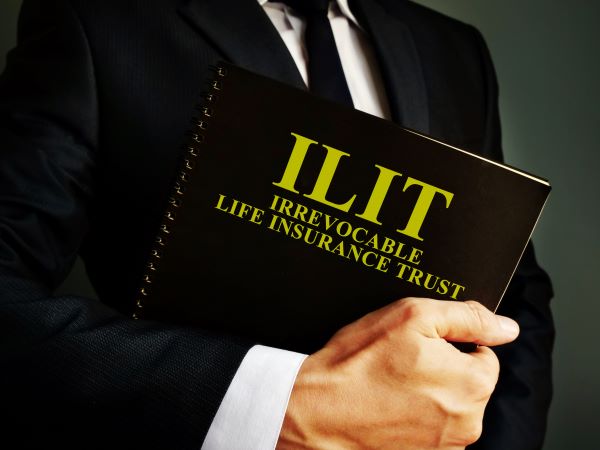An estate plan is designed to ensure that your assets are distributed according to your…

An Irrevocable Life Insurance Trust: Factors to Consider
As the federal estate tax exemption allowance appears in jeopardy of being lowered, you may need to reconsider how you plan to pass generational wealth to your heirs. Senate Democrats are proposing to lower the current estate tax exemption from $12.06 million to $3.5 million for individuals and $24.12 million to $7 million for couples. Whether this particular Congressional bill will pass into law is unknown; however, change is likely coming to estate tax exemptions. Even without action by Congress, in 2026, the current rate will sunset and essentially be cut in half to about $6.6 million per individual.
Understanding Irrevocable Life Insurance Trusts and Other Taxations
To address additional inheritance taxation, many look to an irrevocable life insurance trust as a mechanism to reduce estate tax and pay your heirs part or all of the amount your estate will be taxed. The asset of the trust will be one or more life insurance policies. However, beware, as once an irrevocable life insurance trust (ILIT) is created, it cannot be rescinded, modified, or amended. There are several important requirements to create and maintain an ILIT properly, and each requirement helps to explain the nature of such a trust.
- If you are the trust grantor, you cannot also serve as a trustee because a trustee controls the trust, leading to the trust being considered a part of your estate. It is crucial to name a trusted person or financial institution to act as a responsible trustee.
- The trust itself must be the owner of the life insurance policy. If you transfer an existing policy to the trust and die within three years of the transfer, the policy is part of your estate due to a look-back rule. The trust can directly purchase a policy to avoid this risk.
- The trust must pay the policy premiums, and you must transfer funds to the trust for such a purpose. This situation can create an issue with gift taxes as a transfer to a trust is not usually afforded the yearly gift tax exclusion of $16,000. To qualify as a gift for a tax exclusion, the recipient must have a “present interest” in the money. To accommodate this requirement, you can use what is known as “Crummey” power, giving beneficiaries the ability to withdraw funds transferred to the trust for up to thirty days. Sending a Crummey letter to the beneficiaries of an ILIT informs that a gift has been made to the trust, and there is an immediate and unrestricted right to withdraw those assets for up to thirty days. After thirty days, the trustee can pay the annual insurance premium with the funds. Although you run the risk that the beneficiaries will withdraw these funds, if you make it clear the financial benefit is greater in the future, it should not present a problem.
- Generally, the beneficiary of the life insurance policy is the trust. After the funds are deposited into the trust, the trustee can distribute the assets to the beneficiaries as specified in the trust. If your beneficiaries are still minors, you can instruct the trustee to wait until they reach a certain age. Leaving the assets in the trust can also protect them from beneficiaries’ creditors.
ILIT’s can own both individual and second to die life insurance policies. All premium payments should come from a bank account owned by the ILIT. The downside to an ILIT is that it is irrevocable. However, your ILIT is a powerful tool that can minimize your estate taxes, avoid gift taxes, protect assets and government benefits, select the timeline of distribution to beneficiaries, and more. If you would like to discuss whether an ILIT may be right for you, please contact our office at (603) 770-9135 to schedule a consultation to discuss your legal matters.




